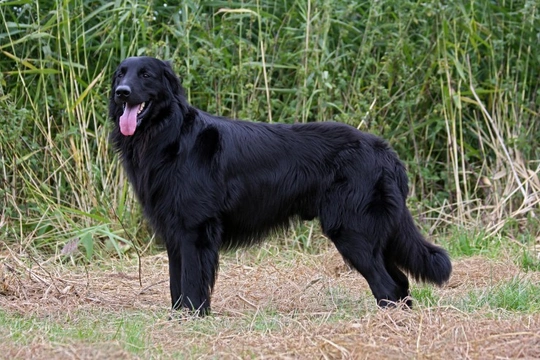
Osteochondrosis in the Hovawart dog breed
The Hovawart is a large and noble-looking dog breed that is recognised within the Kennel Club’s working group, reflecting the breed’s origins as superior watchdogs and herding dogs as well as pets and companions in their native country of Germany.
Whilst the breed isn’t hugely common within the UK and many dog lovers will never have seen one in the flesh, they do have a dedicated following of fans and enthusiasts that admire the breed’s core traits of loyalty, reliability, a calm, kind temper and a natural affinity for children.
This is of course a large dog breed that is both tall and heavy, which means that they are not a good fit for people who are unable to manage a large dog, or that live in a smaller home. However, they are gentle giants that have very nice natures and that don’t tend to be pushy or dominant within the home.
If you are looking to buy a large dog breed, there are a lot of options available and many dog buyers look no further than the best known and most popular large dog breeds that we commonly see in the UK. However, it is always a good idea to consider other options and investigate some of the other breeds that are available in order to find the perfect fit.
Researching the purchase of any dog breed takes time, trial and error, and you will probably rule out several breeds along the way. When doing your research, it is important to take into account the general health of the breeds you are considering, and to find out if there are any hereditary health issues that can affect dogs of the breed in question.
Whilst the Hovawart tends to be quite long lived, particularly for a large dog breed (with an average lifespan of 10-14 years) there are a number of health issues that are considered to be risks for dogs of the breed, and which can be passed on from parent dogs to their litters.
One such condition is osteochondrosis, and this is something that all potential Hovawart buyers should be aware of, and learn a little bit about.
In this article we will look at osteochondrosis in the Hovawart dog breed, explaining what the condition is and why the Hovawart breed has higher than normal risk factors for it. Read on to learn more.
What is osteochondrosis?
Osteochondrosis is a condition of the skeletal system that affects the dog’s bones and joints, and which occurs due to developmental abnormalities that set into the joints.
This leads to a range of different problems for affected dogs, which can be quite variable in impact and severity. The condition can affect any part of the body where joints are present, but it tends to develop most regularly within bones like the knees, elbows and shoulders, and these are also the areas that tend to be the most acutely affected too.
Why is the Hovawart at higher risk of osteochondrosis?
Osteochondrosis is a hereditary health disorder, and dogs with the condition develop through their puppyhood with abnormalities in their bones and joints. If a dog’s parents suffered from osteochondrosis, they can pass the risk factors for it onto their own offspring and this results in another affected generation that also have the ability to pass the condition on.
Large dog breeds as a whole are more likely than smaller ones to suffer from skeletal problems, due to the additional stress placed on their bones and joints. Additionally, because the Hovawart breed isn’t common in the UK and there are only a limited number of dogs of the breed within the gene pool, hereditary health problems like osteochondrosis can spread across a significant percentage of breeding dogs within just a few generations, and it can be hard to reverse this trend due to the need to outcross to unrelated, healthy dogs of the same breed.
We don’t know exactly how osteochondrosis is inherited or the mode of transmission itself, but the Hovawart breed as a whole is one within which osteochondrosis appears more often than simple chance would indicate to be likely.
Choosing and buying a healthy Hovawart puppy
If you are looking to buy a Hovawart puppy within the UK, the options available to you will be somewhat limited by the relatively small number of dogs of the breed and so, scarcity of new litters. This means that you may have to join a waiting list to purchase as Hovawart puppy, and may have to wait several months for the right one to come along.
However, you should still apply the same selection criteria to any litter you view as you would in any other situation, and not rush into a decision or pick a puppy in a hurry so that you don’t miss out.
It is important to examine the dam (and sire, if present) of the litter and talk to the breeder in depth about the breed’s health and wellness, and if any dogs within the breed line suffered from osteochondrosis.
If a puppy has a parent or other close relative with osteochondrosis, their risk factors for the condition will be higher, and you should make your final purchase decision accordingly.



